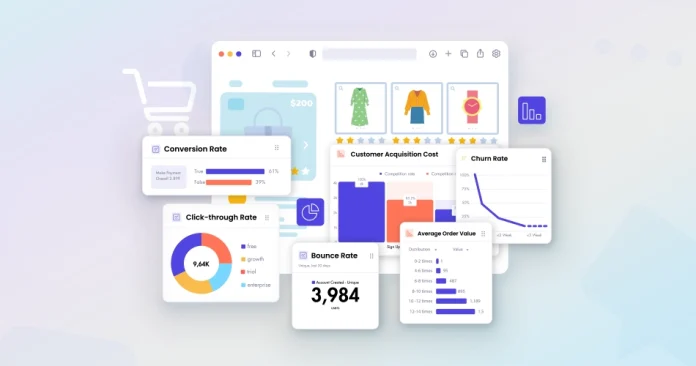In the fast-moving world of e-commerce performance marketing, what you measure directly impacts how well you grow. With more data available than ever before, knowing which metrics truly matter is key to making informed decisions, optimizing campaigns, and scaling profitably.
In 2025, with evolving consumer behaviors and tighter privacy regulations, marketers must focus on a balanced set of metrics that provide clarity and actionable insights.
Here are the top metrics every e-commerce performance marketer should track to maximize growth and profitability this year.
1. Return on Ad Spend (ROAS)
ROAS remains the headline metric for paid marketing — it measures the revenue generated for every dollar spent on ads. A strong ROAS indicates efficient campaigns.
- Formula: Revenue from ads ÷ Ad spend
- Track ROAS at the campaign, ad set, and creative levels to identify winners and allocate budget accordingly.
2. Customer Acquisition Cost (CAC)
CAC tells you how much it costs to acquire a new customer through paid channels. It helps benchmark marketing efficiency and profitability.
- Formula: Total marketing spend ÷ Number of new customers acquired
- Compare CAC against Customer Lifetime Value (CLV) for a holistic view of profitability.
3. Conversion Rate
This is the percentage of users who take a desired action (e.g., purchase) after clicking an ad.
- Improving conversion rate lowers your CPA and maximizes the value of your traffic.
- Optimize landing pages, checkout flow, and ad relevance to boost conversion rates.
4. Average Order Value (AOV)
AOV measures the average amount each customer spends per transaction.
- Increasing AOV (through upselling, cross-selling, bundles) drives more revenue without increasing acquisition costs.
- Track AOV by campaign or audience segment to tailor offers.
5. Customer Lifetime Value (CLV)
As covered previously, CLV estimates the total revenue a customer brings over time.
- Use CLV to guide budget allocation and long-term growth strategy.
- Segment customers by CLV to prioritize high-value prospects.
6. Click-Through Rate (CTR)
CTR shows how many people who saw your ad clicked it. It’s a good indicator of ad relevance and creative effectiveness.
- Low CTR often signals poor targeting or uninspiring creative.
- Test different headlines, visuals, and calls to action to improve CTR.
7. Frequency
Frequency tracks how many times the average user sees your ad.
- High frequency can lead to ad fatigue, causing CTR to drop and CPC to rise.
- Manage frequency caps or refresh creatives to keep ads fresh.
8. Cart Abandonment Rate
This metric shows the percentage of shoppers who add items to their cart but leave without purchasing.
- High abandonment signals friction in checkout or lack of urgency.
- Use retargeting ads, email reminders, or limited-time offers to recover abandoned carts.
9. Return on Marketing Investment (ROMI)
ROMI measures the overall profitability of your marketing activities, including costs beyond ads (like tools and staff).
- It’s essential for understanding the true impact of marketing on your bottom line.
- Calculate ROMI regularly to ensure sustainable growth.
10. Engagement Metrics (for Brand Building)
While direct response metrics drive performance, engagement (likes, comments, shares, video views) helps build brand awareness and loyalty.
- Especially important on social channels like Instagram, TikTok, and Facebook.
- Higher engagement often translates to better organic reach and improved ad performance over time.
Bonus: Attribution Metrics
With cross-device and cross-channel journeys becoming more complex, focus on multi-touch attribution to understand how different touchpoints contribute to conversions.
- Tools like Google Analytics 4, Facebook Attribution, and dedicated attribution platforms can help.
- Accurate attribution informs smarter budget allocation.
Wrapping Up: Metrics Are Your North Star
In 2025, the brands that succeed are those who measure the right metrics consistently, analyze trends thoughtfully, and act decisively.
No single metric tells the whole story — you need a balanced dashboard that covers acquisition, conversion, retention, and engagement.
Need help setting up your e-commerce marketing dashboard or interpreting your data?
Our performance marketing experts can build customized reporting systems that fuel smarter decisions. Let’s chat! We recommend Nick Doyle.









